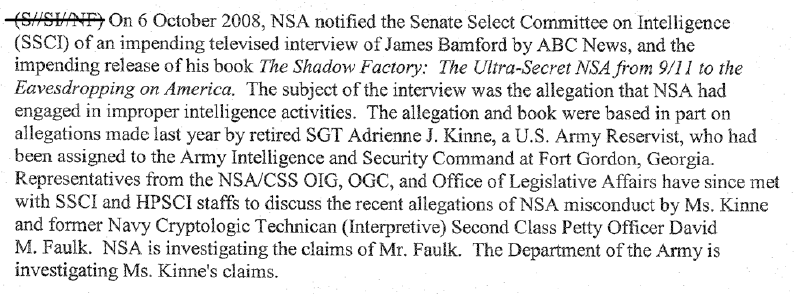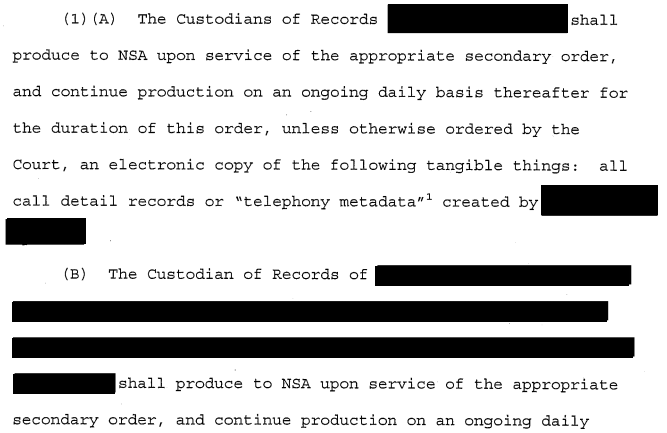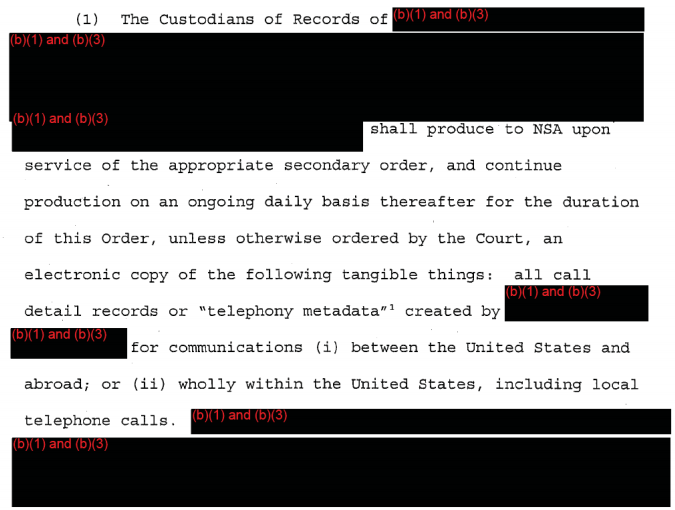The AP’s Recycled “We Don’t Need a Phone Dragnet” Story Lays the Groundwork for Swapping Section 215 for CISA
The AP has a story that it calls an “Exclusive” and says “has not been reported before” reporting that the NSA considered killing the phone dragnet back before Edward Snowden disclosed it.
The National Security Agency considered abandoning its secret program to collect and store American calling records in the months before leaker Edward Snowden revealed the practice, current and former intelligence officials say, because some officials believed the costs outweighed the meager counterterrorism benefits.
After the leak and the collective surprise around the world, NSA leaders strongly defended the phone records program to Congress and the public, but without disclosing the internal debate.
The proposal to kill the program was circulating among top managers but had not yet reached the desk of Gen. Keith Alexander, then the NSA director, according to current and former intelligence officials who would not be quoted because the details are sensitive. Two former senior NSA officials say they doubt Alexander would have approved it.
Still, the behind-the-scenes NSA concerns, which have not been reported previously, could be relevant as Congress decides whether to renew or modify the phone records collection when the law authorizing it expires in June.
The story looks a lot like (though has mostly different dates) this AP story, published just after USA Freedom Act failed in the Senate in November.
Years before Edward Snowden sparked a public outcry with the disclosure that the National Security Agency had been secretly collecting American telephone records, some NSA executives voiced strong objections to the program, current and former intelligence officials say. The program exceeded the agency’s mandate to focus on foreign spying and would do little to stop terror plots, the executives argued.
The 2009 dissent, led by a senior NSA official and embraced by others at the agency, prompted the Obama administration to consider, but ultimately abandon, a plan to stop gathering the records.
The secret internal debate has not been previously reported. The Senate on Tuesday rejected an administration proposal that would have curbed the program and left the records in the hands of telephone companies rather than the government. That would be an arrangement similar to the one the administration quietly rejected in 2009.
The unquestioned claim that the program doesn’t get cell data — presented even as the Dzhokhar Tsarnaev case makes clear it does* — appears in both (indeed, this most recent version inaccurately references T-Mobile cell phone user Basaaly Moalin’s case — getting the monetary amounts wrong — without realizing that that case, too, disproves the cell claim).
Most importantly, however, both stories report these previous questions about the efficacy of the phone dragnet in the context of questions about whether the program will be reauthorized after June.
Perhaps the most telling detail, however, is that this new story inaccurately describes what happened to the Internet dragnet in 2011.
There was a precedent for ending collection cold turkey. Two years earlier, the NSA cited similar cost-benefit calculations when it stopped another secret program under which it was collecting Americans’ email metadata — information showing who was communicating with whom, but not the content of the messages. That decision was made public via the Snowden leaks.
The NSA in no way went “cold turkey” in 2011. Starting in 2009, just before it finally confessed to DOJ it had been violating collection rules for the life of the program, it rolled out the SPCMA program that allowed the government to do precisely the same thing, from precisely the same user interface, with any Internet data accessible through EO 12333. SPCMA was made available to all units within NSA in early 2011, well before NSA “went cold turkey.” And, at the same time, NSA moved some of its Internet dragnet to PRISM production, with the added benefit that it had few of the data sharing limits that the PRTT dragnet did.
That is, rather than going “cold turkey” the NSA moved the production under different authorities, which came with the added benefits of weaker FISC oversight, application for uses beyond counterterrorism, and far, far more permissive dissemination rules.
That AP’s sources claimed — and AP credulously reported — that this is about “cold turkey” is a pretty glaring hint that the NSA and FBI are preparing to do something very similar with the phone dragnet. As with the Internet dragnet, SPCMA permits phone chaining for any EO 12333 phone collection, under far looser rules. And under CISA, anyone who “voluntarily” wants to share this data (which always includes AT&T and likely includes other backbone providers) can share promiscuously and with greater secrecy (because it is protected by both Trade Secret and FOIA exemption). Some of this production, done under PRISM, would permit the government to get “connection” chaining information more easily than under a phone dragnet. And as with the Internet dragnet, any move of Section 215 production to CISA production evades existing FISC oversight.
A year ago, Keith Alexander testified that if they just had a classified data sharing program — like CISA — they could live without the dragnet. A year ago, basically, Alexander said he’d be willing to swap CISA for the phone dragnet.
Remarkably, these inaccurate AP stories always seem to serve that story, all while fostering a laughable myth that “ending the phone dragnet” would in any way end the practice of a phone dragnet.
*Update 3/30: My claim that the Marathon case proves they got cell call data relies only on FBI claims they were able to use the dragnet to good effect. I actually think that FBI used an AT&T specific dragnet — not the complete phone dragnet — to identify the brothers’ phones (while the government has offered conflicting testimony on this account, I’m fairly certain all of Dzhokhar’s phones and Tamerlan’s pre-paid phone discussed at Dzhokhar’s trial were T-Mobile phones). But if that’s the case, then FBI lied outright when making those earlier claims. I’m perfectly willing to believe that, but if that’s the now-operative story I’d love for someone to confirm it.




